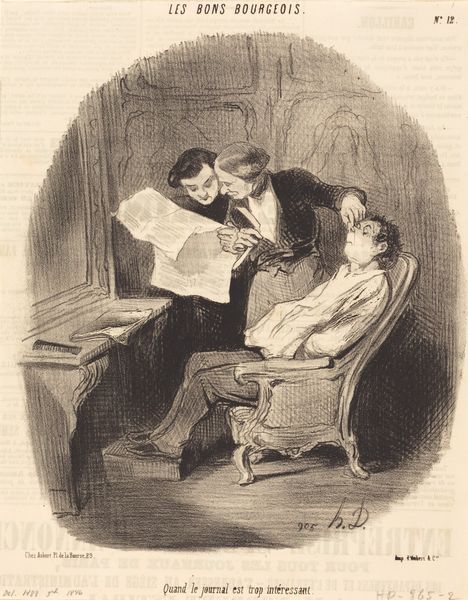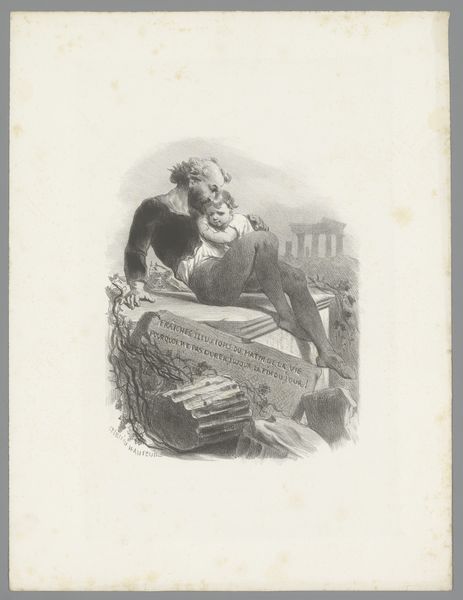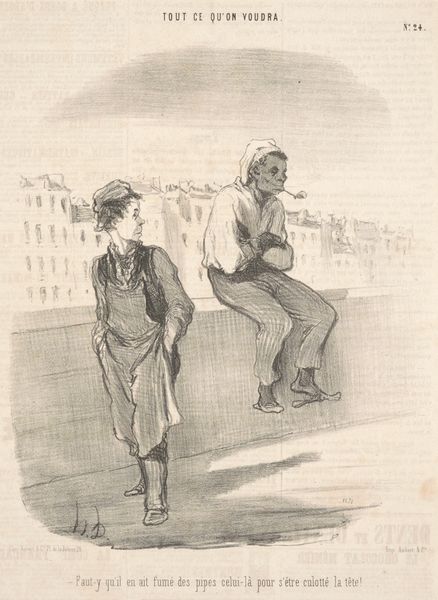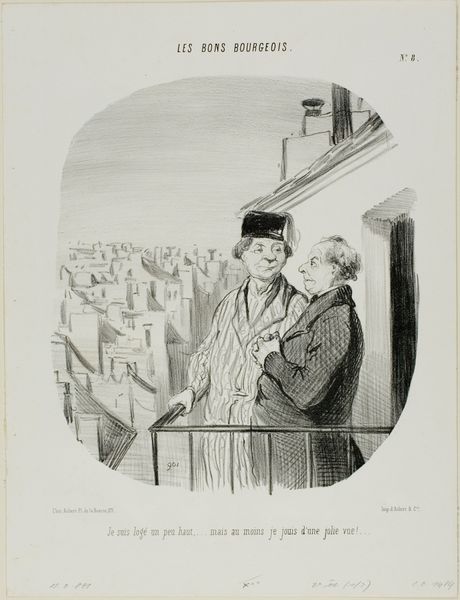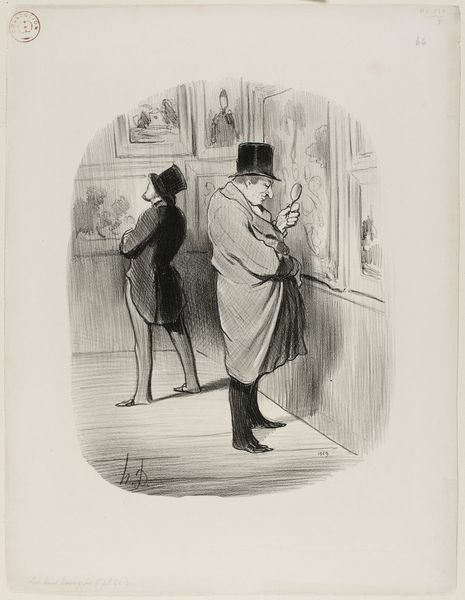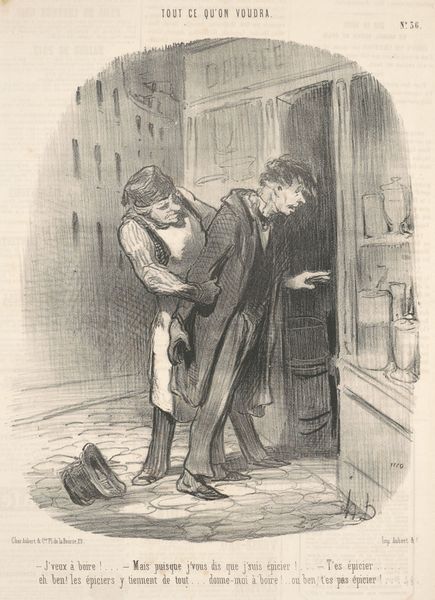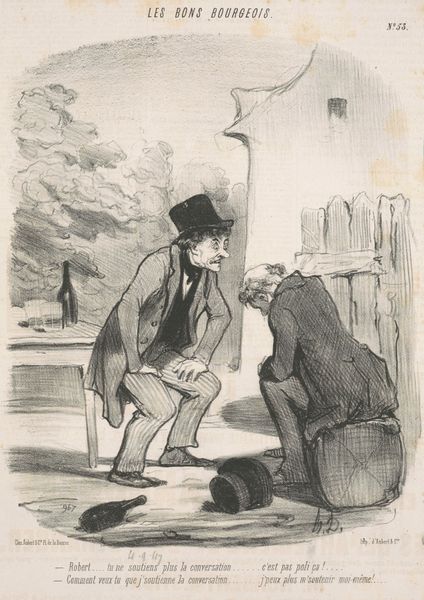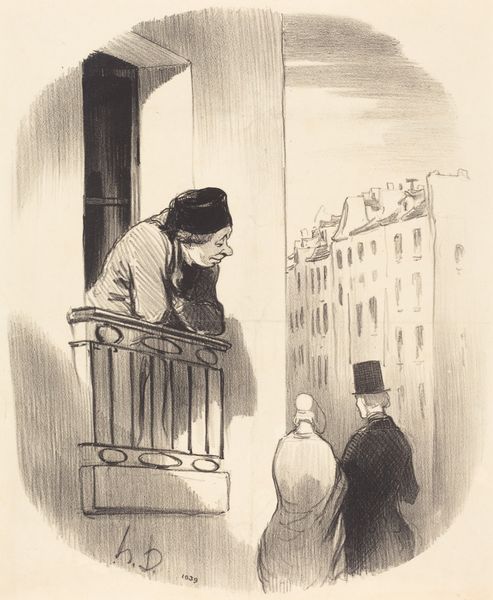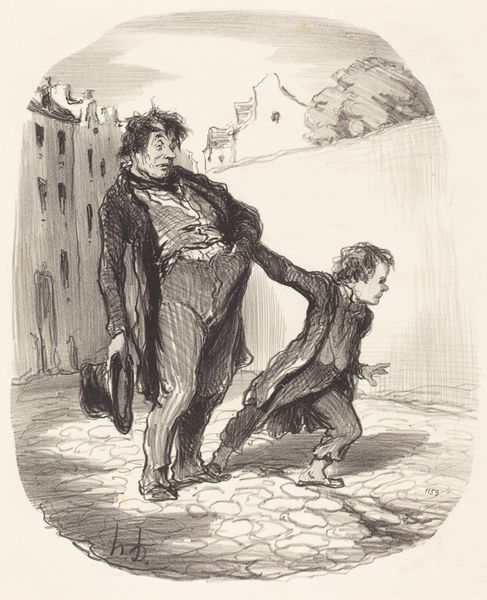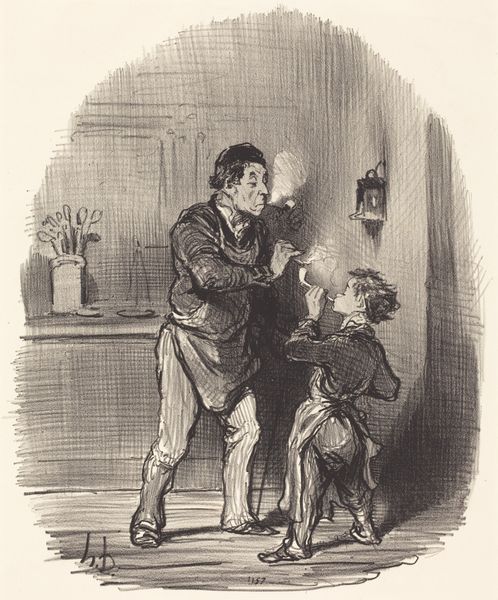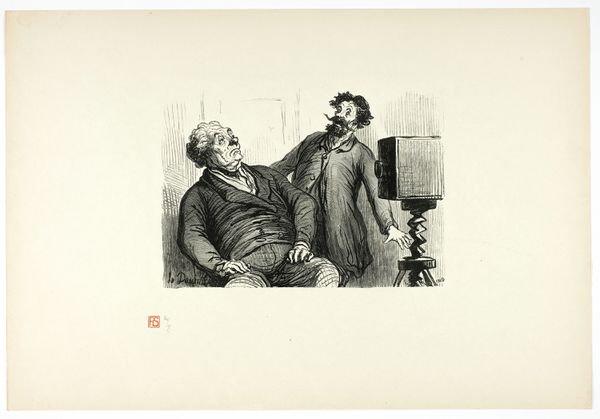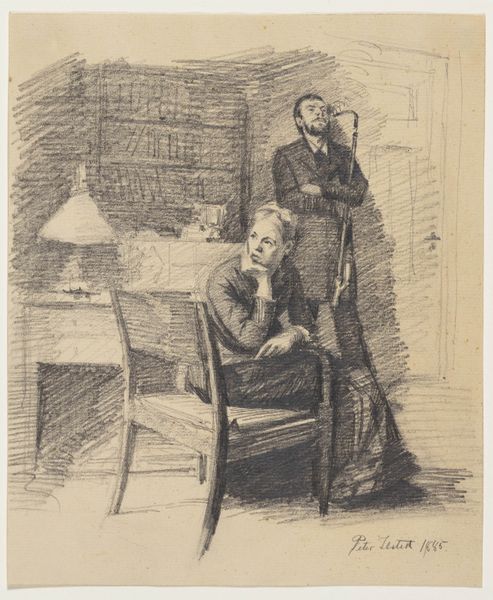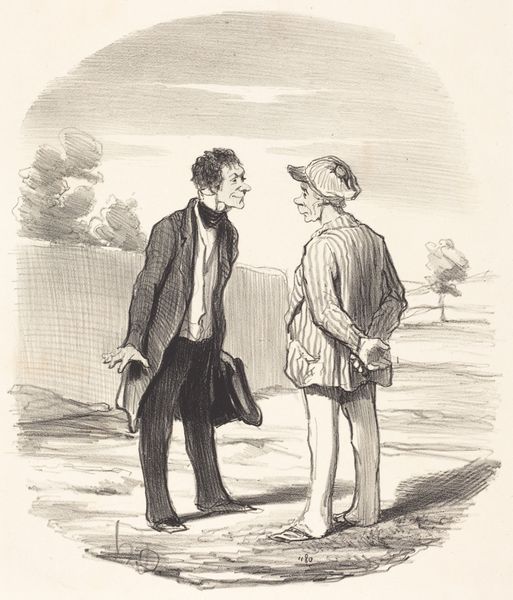
drawing, lithograph, print, pencil
#
drawing
#
imaginative character sketch
#
light pencil work
#
quirky sketch
#
lithograph
# print
#
caricature
#
pencil sketch
#
personal sketchbook
#
idea generation sketch
#
sketchwork
#
romanticism
#
pen-ink sketch
#
pencil
#
sketchbook drawing
#
cityscape
#
fantasy sketch
#
realism
Copyright: National Gallery of Art: CC0 1.0
Editor: Honoré Daumier’s lithograph, "Comment on comprend le balcon Espagnol a Paris" from 1847, presents two figures on a balcony overlooking what I assume is a Parisian cityscape. There's something satirical about it... the way the figures are rendered and their detachment. What stands out to you? Curator: The image indeed acts as a bridge. Consider the title itself: "How one understands the Spanish balcony in Paris." The artist sets up a dialogue, or perhaps a dissonance, between cultures and perceptions. Balconies, traditionally spaces for public display and connection, here frame figures seemingly isolated, even indifferent, despite their shared space. Don’t you think this detachment carries a deeper commentary? Editor: Definitely! They seem absorbed in their own worlds despite being together, one engrossed in his newspaper and the other seemingly staring into the distance with a cigarette. What symbols or traditions might Daumier be referencing? Curator: Think about the rise of the bourgeoisie in 19th-century Paris. Daumier, known for his social critiques, may be commenting on their detachment from the world around them, their self-absorption amidst the vibrant, bustling city. The “Spanish balcony” perhaps serves as a symbol of exoticism, a status symbol acquired but not truly understood or integrated, reinforcing the superficiality of the figures' connection to anything beyond themselves. Notice their stiff postures, contrasting sharply with the implied freedom of the balcony. Editor: So, it’s less about the literal Spanish balcony and more about what it represents? Almost like a stage for a social commentary. I hadn’t considered the cultural appropriation angle. Curator: Precisely. It invites us to question what they truly *see* and understand versus what they merely *possess* or project. The balcony then becomes a potent symbol, echoing across time and cultures, questioning authenticity and engagement with the world. Does this resonate with contemporary observations? Editor: It does. The idea of performative engagement rather than genuine experience is definitely still relevant. Thanks, I never thought of it that way. Curator: And thank you for the keen observation; artistic appreciation is indeed a beautiful cultural exchange.
Comments
No comments
Be the first to comment and join the conversation on the ultimate creative platform.

